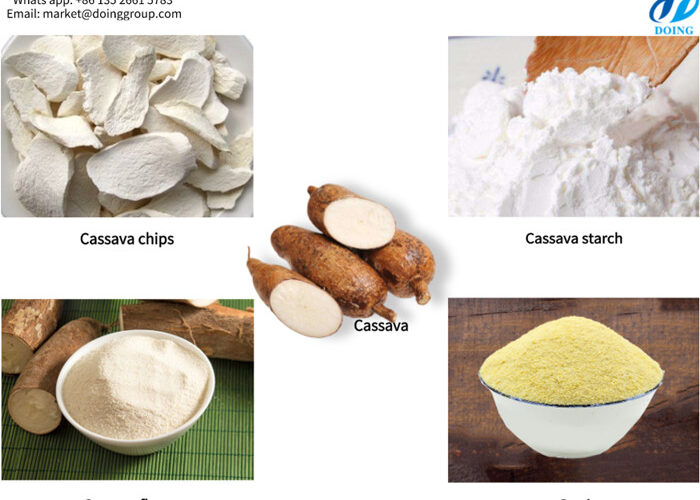Cassava is a tuberous root that can be used to make many products. It’s a great source of protein and vitamins and can be used in many different ways. The flour from cassava is called tapioca flour and it’s an excellent source of nutrients.
Cassava flour is a great protein source.
Cassava flour is a great source of protein, and the best part about it is that it’s gluten free. Many people who have a gluten sensitivity or intolerance can still eat cassava flour because it does not contain any of the proteins found in grains like wheat, rye or barley.
The fiber content in cassava flour can help to promote digestive health as well as lower blood cholesterol levels. A high fiber diet has also been shown to be beneficial for weight loss because eating foods with high amounts of fiber encourages feelings of fullness while also helping you feel less hungry between meals. Additionally, consuming foods with high levels of fiber will help keep your blood sugar levels stable throughout the day instead of causing spikes which may lead to overeating or cravings later on down the road!
Flour can be used to make a variety of products, including bread, tortillas and leavened flatbreads.
Cassava flour can be used to make a variety of products, including bread, tortillas and leavened flatbreads. It is also an excellent substitute for wheat flour when baking gluten-free products. Cassava flour is made from the cassava root, which is very similar to a potato in its composition. Its starchiness makes it a good thickener for soups and stews as well as for making sauces or gravies.
Cassava is an excellent source of vitamins C and B.
Cassava is an excellent source of vitamin C, which the body needs for growth and development. Vitamin C is also required for the formation of collagen, a protein that plays a key role in wound healing. In addition to its high concentration of vitamin C, cassava contains significant amounts of vitamin B6 (pyridoxine), thiamin, riboflavin, niacin and pantothenic acid. The fiber content in cassava flour makes it beneficial for colon health too!
When you’re ready to cook with your fresh cassava flour or dried cassava flour that you’ve made at home (see below), simply add it like any other type of flour–it can be substituted cup-for-cup with most types–and enjoy all its nutritional benefits!
Cassava grows in Brazil, Mexico, Guyana and the Philippines.
Cassava grows in Brazil, Mexico and the Philippines. It is a tropical plant that is grown in warm climates. Cassava is a root crop and food staple in many countries, such as Ghana and Indonesia. Cassava roots are used to make tapioca flour, which is used to make breads, cakes and other baked goods. The leaves of the cassava plant can be cooked and eaten like spinach if they’re young enough; otherwise they have to be soaked first so they don’t irritate your throat when eaten raw.
The root of the cassava plant is used for many different products.
You may be surprised to learn that you’ve been eating cassava root many times in your life. You may have had tapioca pudding, or eaten rice and beans with plantain chips. Those are both made from cassava. The root of the plant is also used to make flour and starch, which can be used for baking or in other foods.
In addition to its edible uses, cassava has been used for paper production since ancient times. In fact, some early civilizations most likely didn’t use cotton or papyrus (an early form of paper) as their main writing material; they would have written on sheets made from bamboo strips tied together with strings—a type of paper called “lontar”, which was popular in Indonesia and other tropical areas where it was grown as a food crop until recently when its popularity declined due to deforestation caused by logging operations!
Finally – because it grows easily without needing lots of fertilizer or pesticides like some crops do – it’s an excellent source material for biofuel production too!
This post will give you some ideas of ways to use cassava flour
You can use cassava flour to make bread, tortillas and flatbreads. Cassava flour is also great for making pancakes and muffins.
If you’re looking for a gluten-free alternative to flour or breadcrumbs, then cassava could be the answer!
We hope this post has given you some ideas of ways to use cassava flour in your life. It’s a versatile product that can make many different kinds of foods and products, from breads to crackers!
